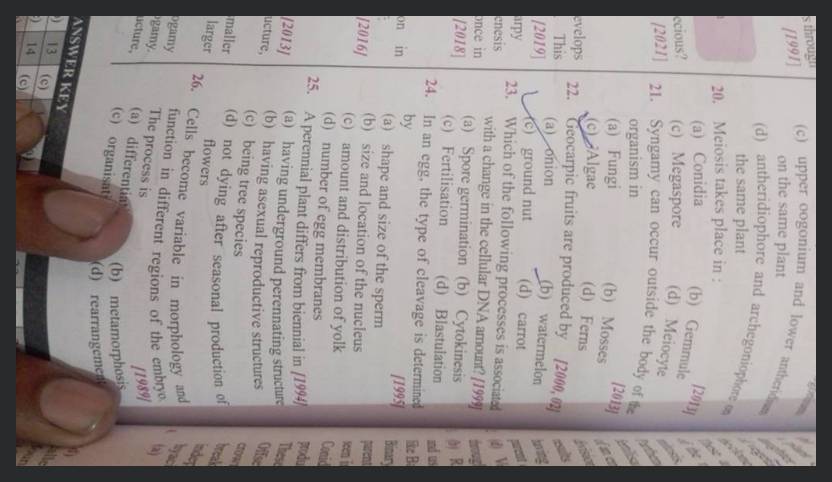Question
Easy
Solving time: 1 mins
Cells become variable in morphology and function in different regions of the embryo. The process is
Found 7 tutors discussing this question
Discuss this question LIVE
5 mins ago
 Text solution
Text solution Verified
Verified
(a) Cells become variable in shape, size & getting their specialization for the formation of particular tissue or organ in future foetus. They place themselves at some specific regions in embryo for further organogeny.
Was this solution helpful?
145
Share
Report

One destination to cover all your homework and assignment needs
Learn Practice Revision Succeed

Instant 1:1 help, 24x7
60, 000+ Expert tutors

Textbook solutions
Big idea maths, McGraw-Hill Education etc

Essay review
Get expert feedback on your essay

Schedule classes
High dosage tutoring from Dedicated 3 experts
Practice questions from Chapterwise DPP Sheets for Biology NEET (Disha)
Question 1
Easy
Views: 5,343
Practice more questions from Reproduction in Organisms
Question 1
Hard
Views: 5,915
(a) Cows, sheeps and rats-Menstrual cycle
(b) Monkeys and apes - Oestrous cycle
(c) Cows and Cats - Continuous breeders
(d) Birds of poultry farms - Seasonal breeders
Practice questions on similar concepts asked by Filo students
Question 2
Views: 5,669
Question 3
Views: 5,460
Question 4
Views: 5,621


Stuck on the question or explanation?
Connect with our Biology tutors online and get step by step solution of this question.
231 students are taking LIVE classes
| Question Text | Cells become variable in morphology and function in different regions of the embryo. The process is |
| Updated On | Feb 13, 2023 |
| Topic | Reproduction in Organisms |
| Subject | Biology |
| Class | Class 12 |
| Answer Type | Text solution:1 Video solution: 1 |
| Upvotes | 262 |
| Avg. Video Duration | 6 min |






